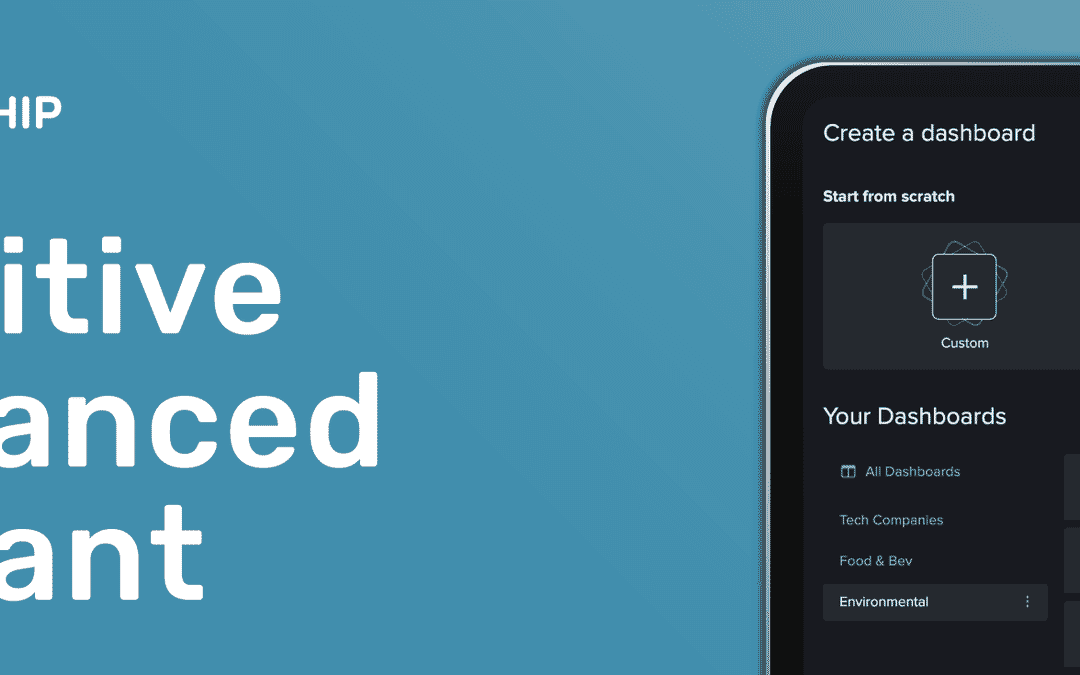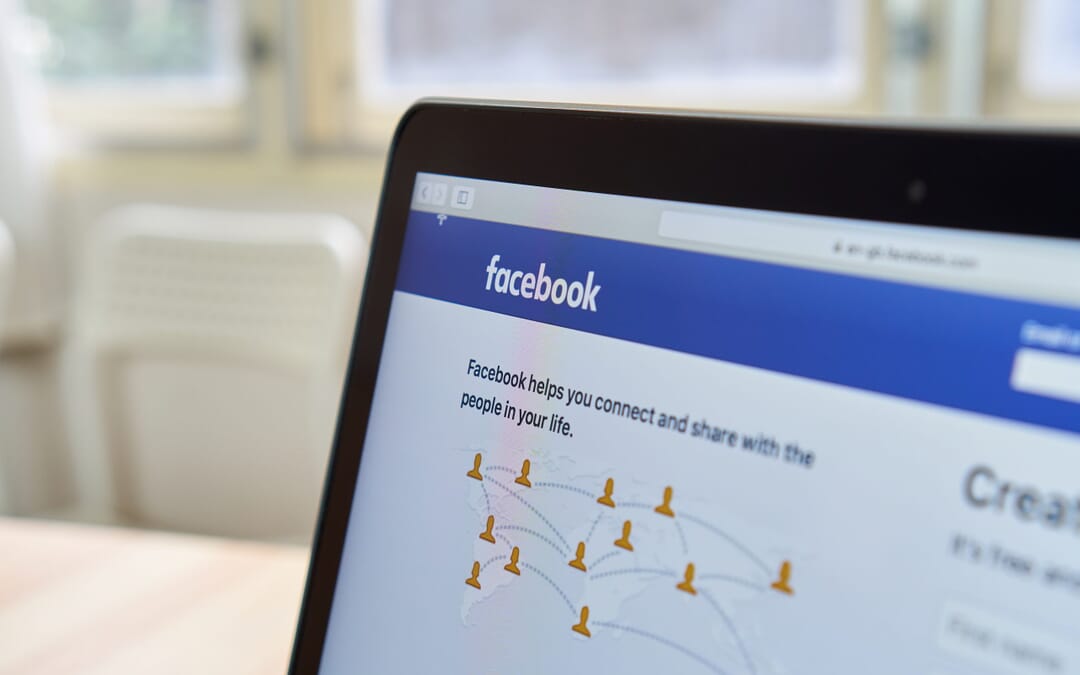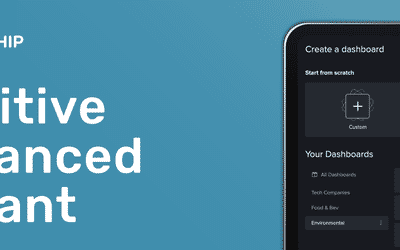Dealing with fake news, misinformation, disinformation, and the dreaded “gray zone” of misunderstood facts has become part of the PR pro’s daily duties in recent years. To effectively prepare for this, communications professionals must understand the risks and develop an approach for detecting, evaluating and responding to issues when they do arise.
We recommend a simple approach for this – based on the smart work we see by our clients, and based on advice from practitioners captured in a Journal of Communications article called “Watchful Waiting: Public Relations Strategies to minimize and manage a fake news crisis”.
As you might expect, this approach emphasizes a state of “watchful waiting” and suggests using data and insight to inform all proactive responses and activities.
Here’s the framework:
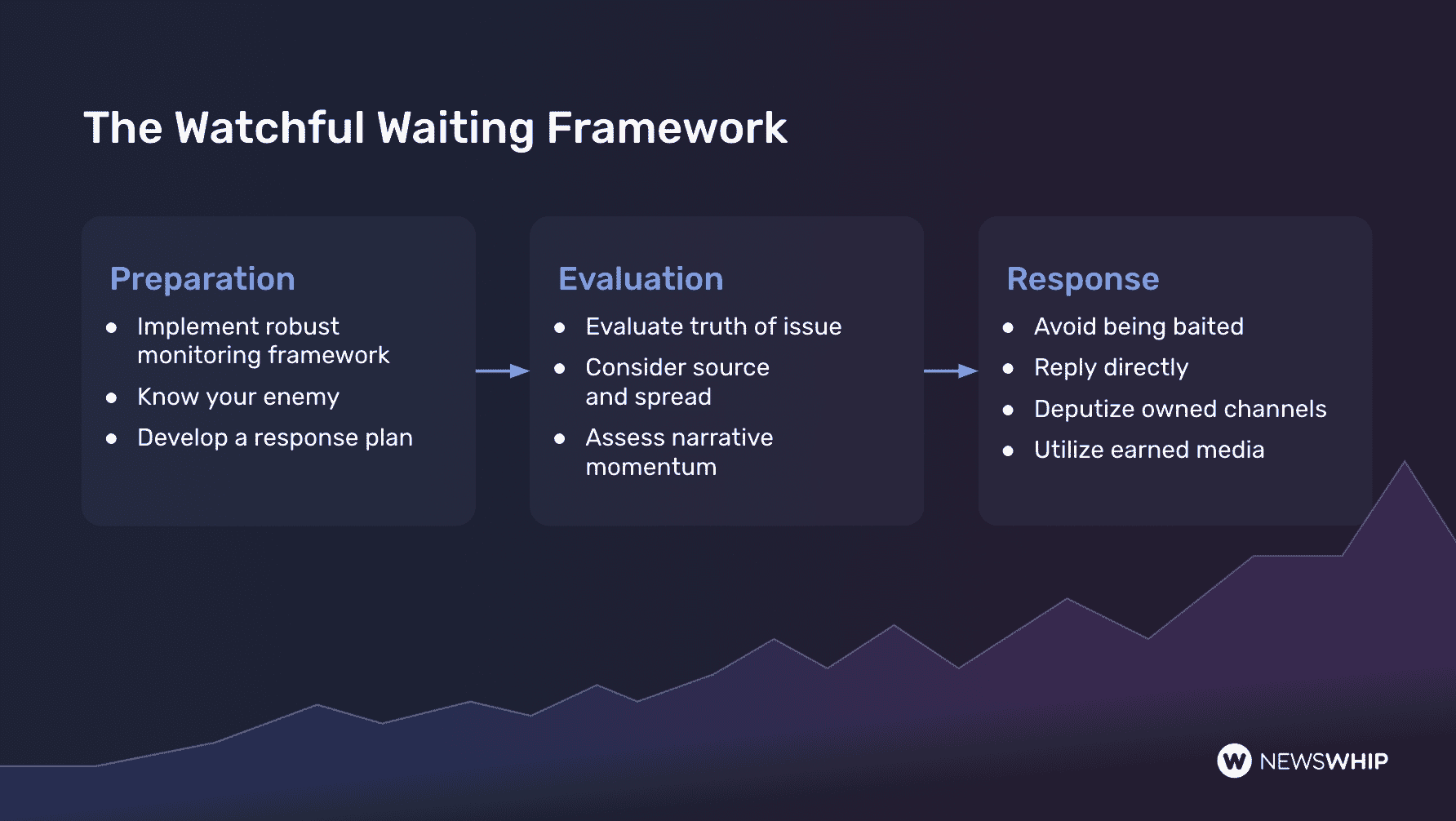
It consists of three parts: preparing for potential misinformation, evaluating it, and responding to it. In principle, it’s not dissimilar from many of the crisis response frameworks with which many will already be familiar, though there are a few unique quirks when it comes to misinformation and gray zone narratives specifically.
Let’s start with how you prepare.
Preparation: Know your Risks, Plan your Responses
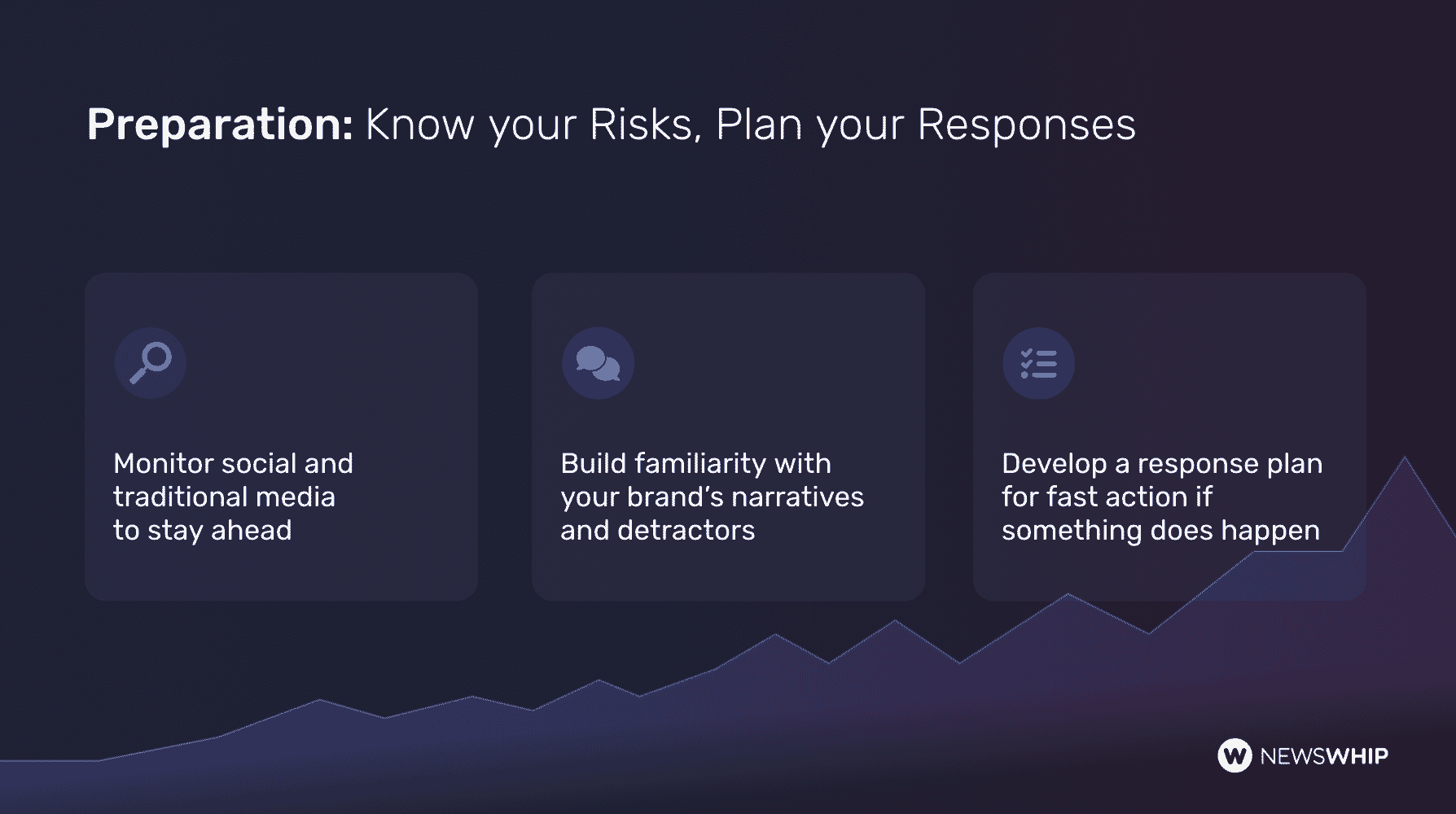
1. Implement a robust monitoring framework, with heavy automation: Set up monitoring systems to track mentions of your brands, executives, industry, and hot topics across social media platforms and media outlets.
a) Monitor widely. Anticipate incoming issues by monitoring the broader landscape of industry topics beyond your brand, particularly regarding any initiatives your organization is involved in.
b) Set alerts for Risky Mentions: Set up alerts to notify you immediately if your brand is mentioned by a publication known for spreading misinformation or making partisan attacks. If such mentions are regular, set up alerts for impactful mentions — those predicted to get significant engagement. (Link to NewsWhip predictive alerts)
Setting up a robust, but automated framework is like a missile defense shield — always on, effective, but allowing the human comms team to relax, and know they are covered.
2. Know Your Enemy: Build familiarity with detractors and negative narratives around your company and industry, even if they seem to only belong to fringe groups or hold politically unpalatable views. Take time to learn from fact checkers, who go to great lengths to understand the slang, ideas, and terminology used by misinformation spreaders.
While it can be comforting to ignore or sideline fringe views, doing so may lead to inadvertent ‘groupthink’. Better to understand your detractors so you can know the context for any attack when it comes.
3. Develop a Response Plan: Establish a comprehensive response plan outlining escalation procedures, processes for providing updates, assigned responsibilities, and scenario-based logic. These updates can include automation and leveraging technology.
Having escalation and decision-making frameworks in place means you can take action in an agile way when things do go wrong.
Your preparation done, let’s say the worst happens, and your brand is caught up in misinformation or a social media crisis. It’s time to evaluate what’s happening.
Evaluation: Understand the Issue As It’s Unfolding
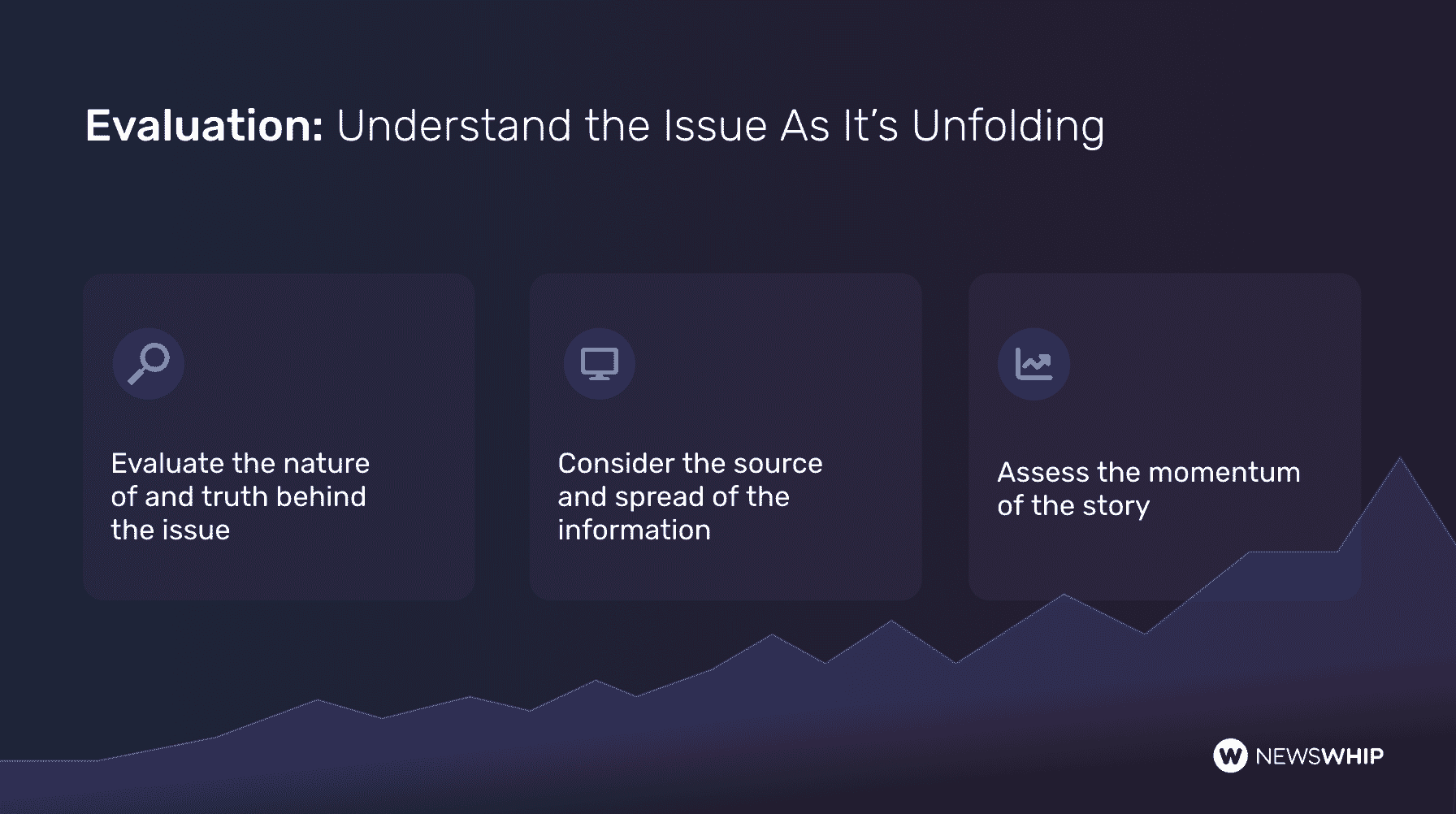
1. Evaluate Truth/Nature of Issue: Assess the accuracy and nature of the narrative being spread. Misinformation isn’t always black and white – it could involve outdated information or mischaracterization of a factual situation, so keep that in mind during this process.
2. Consider the Source and Spread: Analyze the quality and partisanship of the source spreading the misinformation. Determine if the issue is contained within partisan circles or has the potential to break into mainstream media.
3. Assess Momentum: Gauge the size, speed, and rate of change of the story. Determine if it’s a fleeting moment or a sustained movement gaining traction.
Taking the above steps creates a clear, 360-degree view of what’s happening, a tremendous asset for a stressed or busy team dealing with the issue. Dozens of NewsWhip clients have spoken about the calmer response that can come from a clear understanding of what’s really happening, how big (or small it is), and how the data can help avoid overreaction and Streisand effects.
The above steps taken, you can then decide on the appropriate response.
Response: Adapt to the Situation
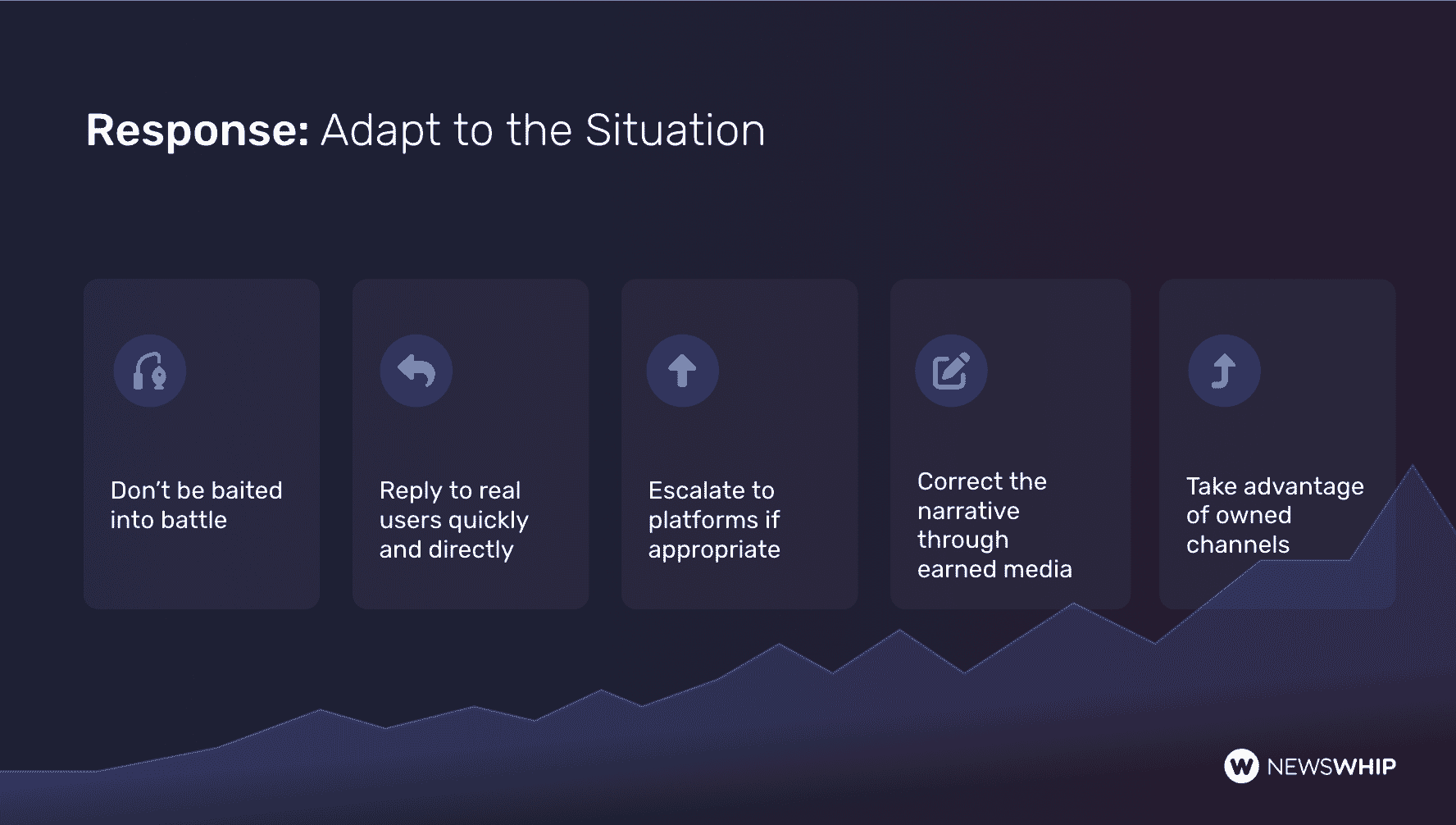
1. Avoid Being Baited: Exercise discretion in responding directly to questionable sources. Engage only where there are genuine opportunities to persuade or correct misinformation.
2. Reply Directly: If responding to genuinely misled or inaccurate claims, consider responding directly on the same channels where misinformation is spreading, such as replying to tweets or comments on Facebook. Additionally, if some false or harmful information is being spread which contravenes a platform’s terms of service, consider reporting it to the platform to mitigate its spread.
3. Deputize Owned Channels: If misinformation gains traction, swiftly issue corrections and reinforce the accurate narrative through owned channels.
4. Utilize Earned Channels: Engage with trusted media outlets to provide clarification and seek corrections as necessary.
By adhering to these principles and integrating them into a comprehensive framework, PR professionals can effectively navigate the turbulent waters of fake news and safeguard the reputation and integrity of their organizations.
For more on Watchful Waiting, read “Lambert, C.A., Ewing, M.E. and Hassan, T. (2024), “Watchful Waiting: public relations strategies to minimize and manage a fake news crisis”, Journal of Communication Management.”
To receive more information on using predictive data to all elements in this workflow, contact Paul Quigley, NewsWhip.





